Complete Solutions to Exercises Linked Comprehension of chapter ALIPHATIC AND AROMATIC ALDEHYDES AND KETONES of Class 12 book with complete answers and questions
| Class 12 | CHEMISTRY |
| Chapter | ALIPHATIC AND AROMATIC ALDEHYDES AND KETONES |
| CENGAGE CHEMISTRY | Exercises Linked Comprehension |
| Number Of Questions | 59 |
| Academic Year | 2023-24 |

Compound (A) is:
View Solution
Compound (B) is:
View Solution
Compound (C ) is:
View Solution
Compound (D) is:
View Solution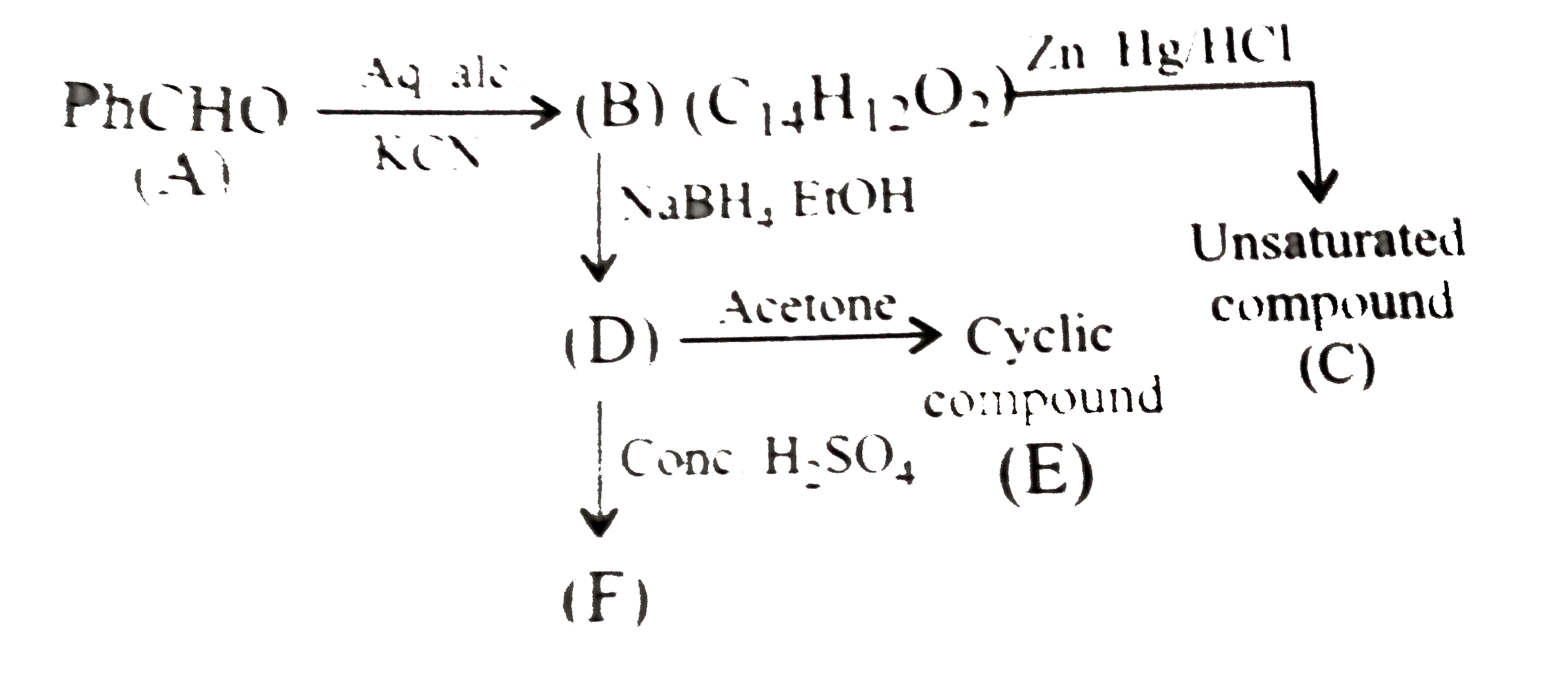
The convertion of (A) to (B) is called:
View Solution
Compound (B) is:
View Solution
Compound (C ) is:
View Solution
Compound (D) is:
View Solution
Compound (E ) is:
View Solution
Compound (F) is:
View SolutionConsider the following reaction in which compound (A) on reaction with `EA A (MeCOCH_(2)COOEt)` in the presence of `NaOEt//EtOH` gives a product which on hydrolysis by different mechanisms.

One of the mechanisms in which an aldol addition by the carbanion of (A) takes place on the `(C=O)` of EA A (acceptor) is given below. Compound fromed by this mechanism is:

View SolutionConsider the following reaction in which compound (A) on reaction with `EA A (MeCOCH_(2)COOEt)` in the presence of `NaOEt//EtOH` gives a product which on hydrolysis by different mechanisms.

In another mechanism, EAA is carbonion source and `(C=O)` group of (A) is acceptor. Given the compounds formed by the aldol product resulting form this mechanism, followed by hydrolysis and decarboxylation.

View SolutionConsider the following reaction in which compound (A) on reaction with `EA A (MeCOCH_(2)COOEt)` in the presence of `NaOEt//EtOH` gives a product which on hydrolysis by different mechanisms.
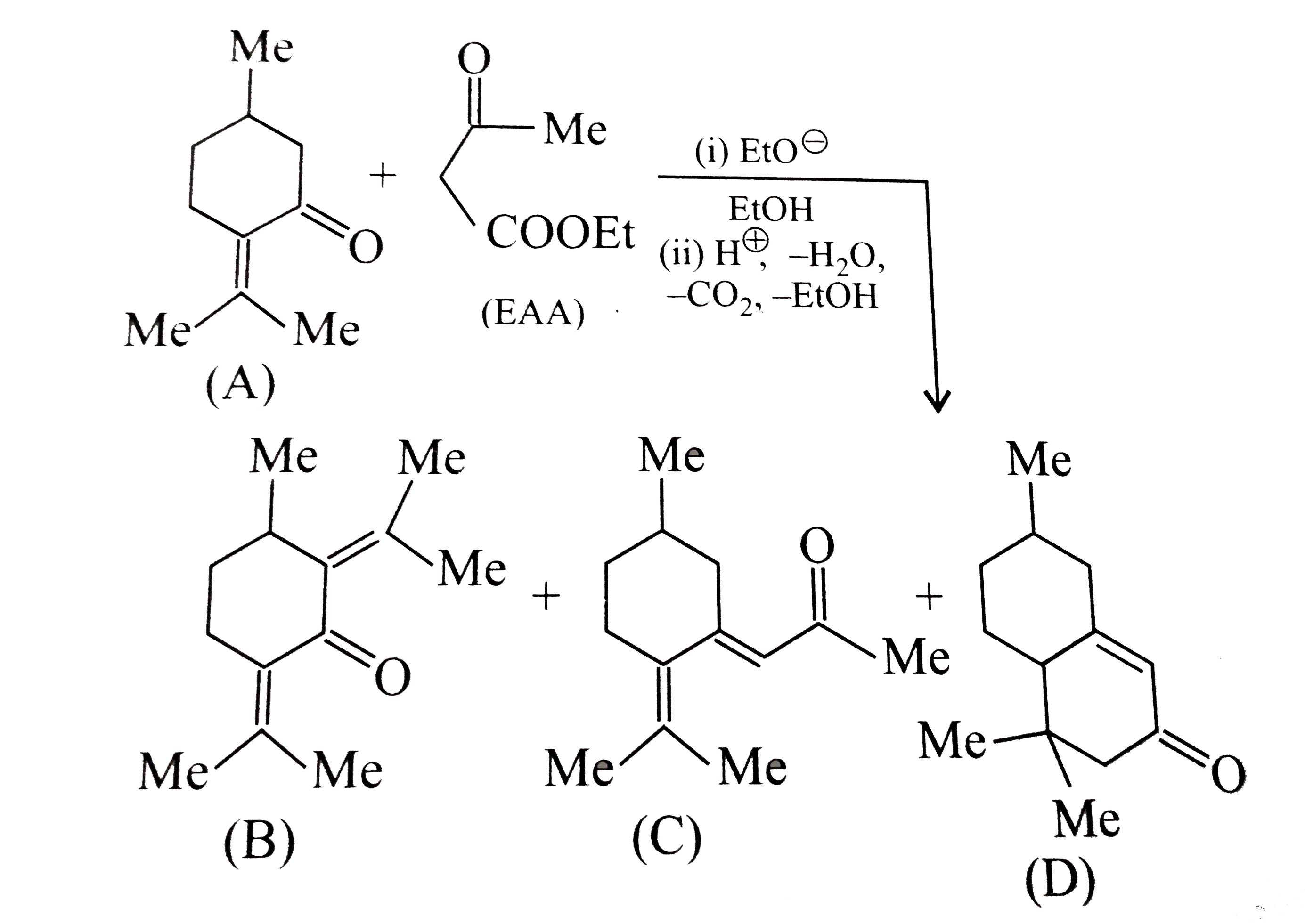
Another mechanism involved the formation of carbanion from the product in. It adds to the both of (A) (an intramolecular Michael addition), followed by hydrolysis with `H_(3)O^(o+)`, to give final product. The compound is:
both of (A) (an intramolecular Michael addition), followed by hydrolysis with `H_(3)O^(o+)`, to give final product. The compound is:
View Solution
Compound (C ) is:
View Solution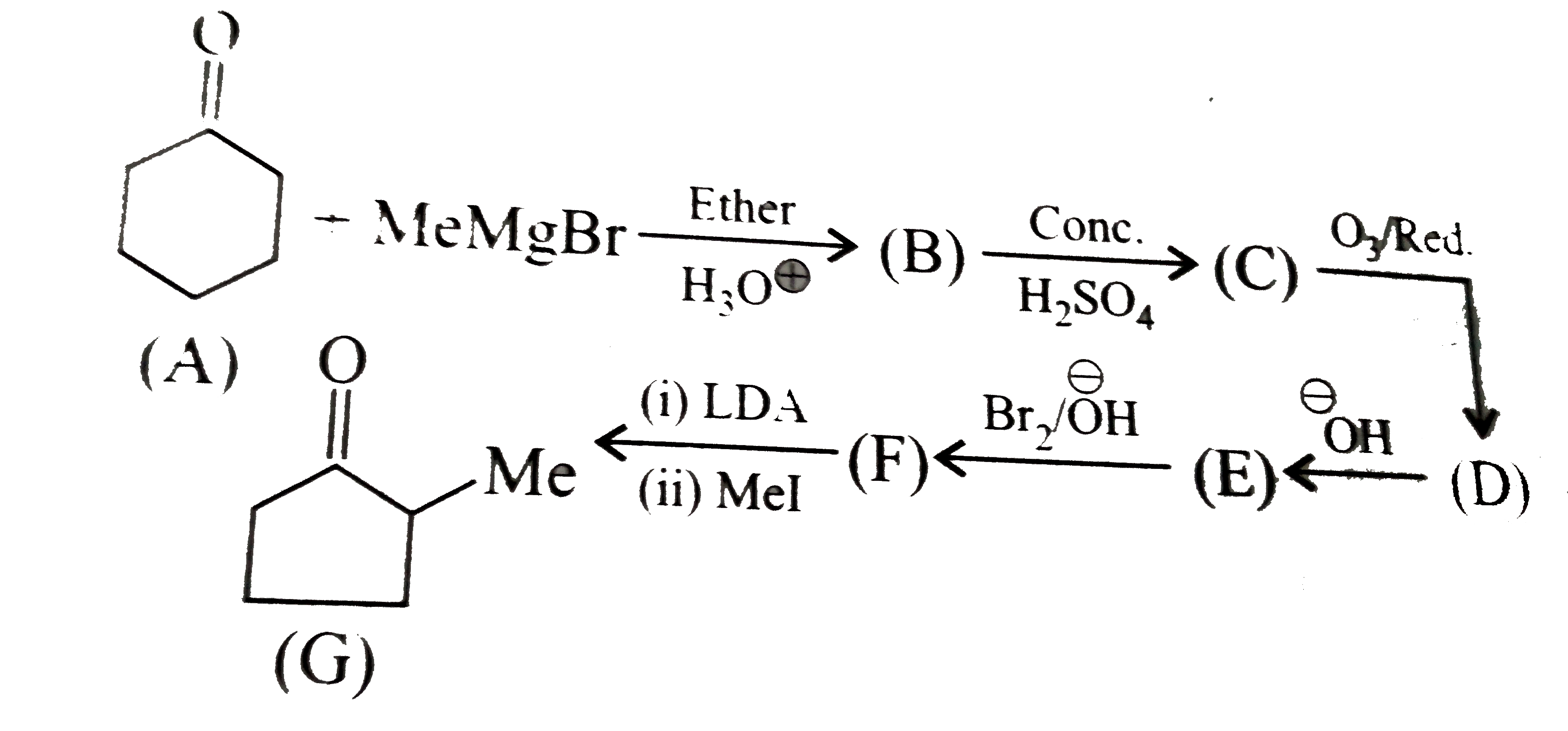
Compound (D) is:
View Solution
Compound (E ) is:
View Solution
Compound (F) is:
View Solution
Which of the statements is/are correct in the formation of (E ) from (D) ?
View Solutioni.
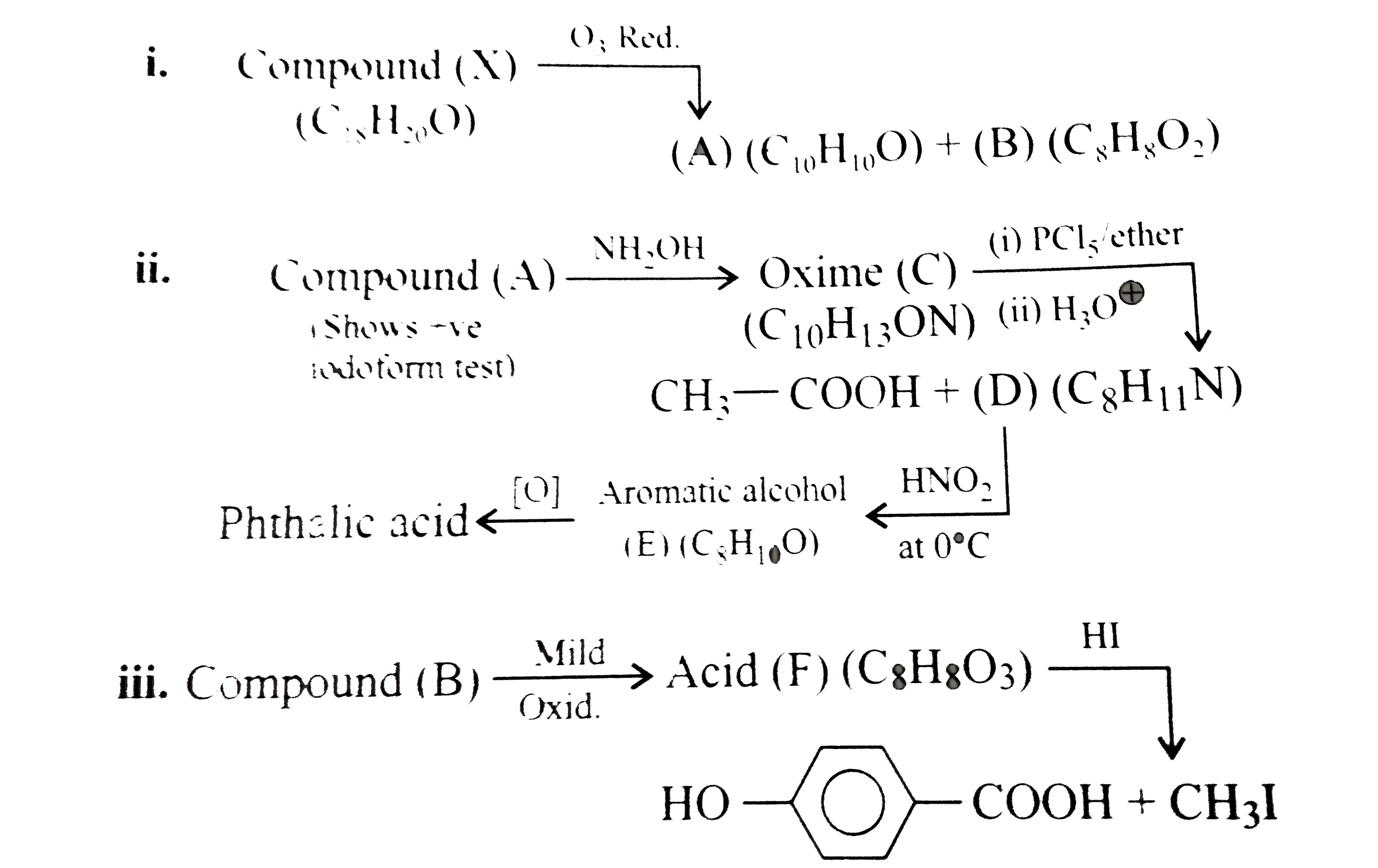
iv. Compound (X) has the highest melting point among its isomers.
Compound (B) is:
View Solutioni.

iv. Compound (X) has the highest melting point among its isomers.
Compound (E ) is:
View Solutioni.
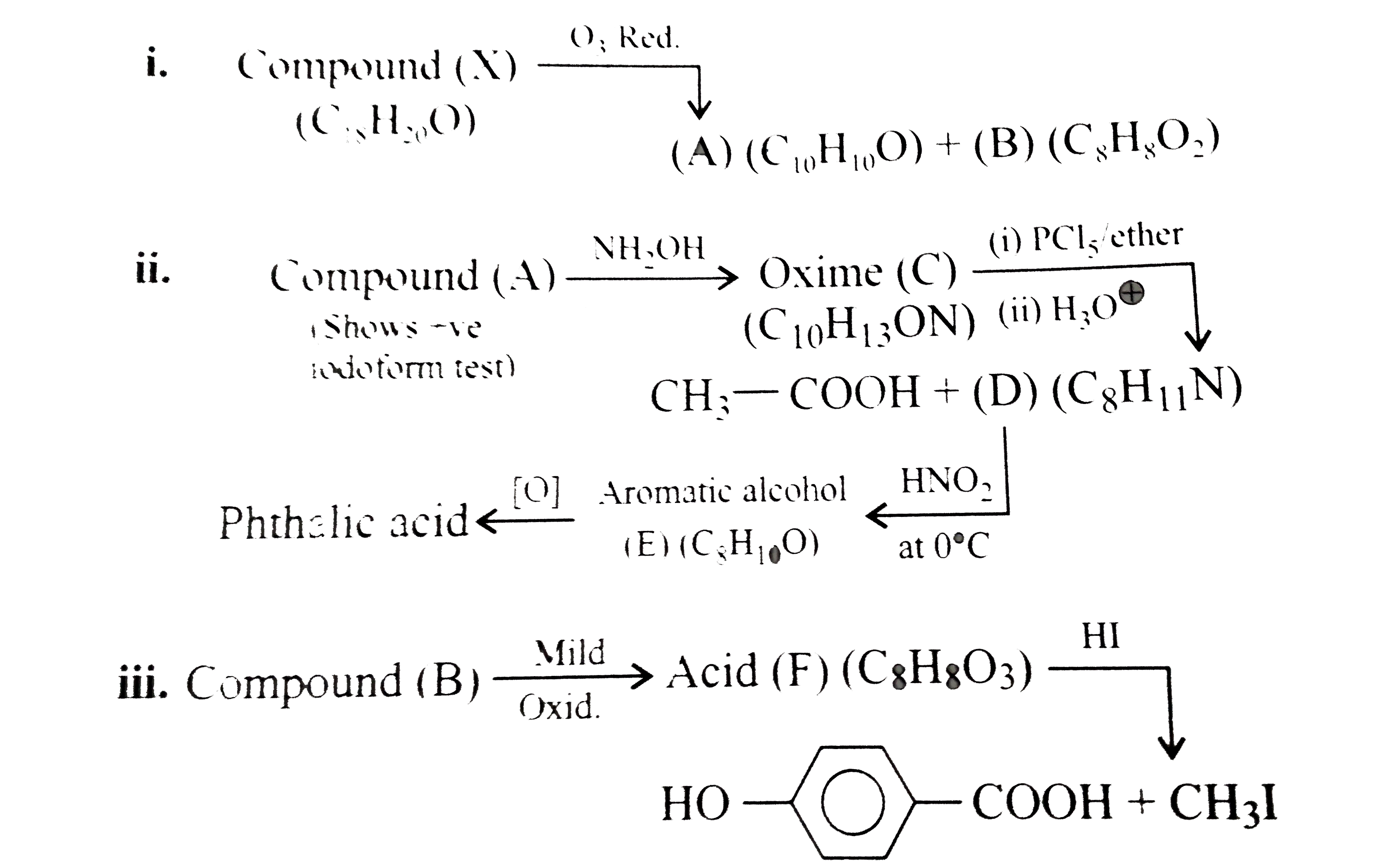
iv. Compound (X) has the highest melting point among its isomers.
Compound (D) is:
View Solutioni.

iv. Compound (X) has the highest melting point among its isomers.
Compound (C ) is:
View Solutioni.

ii.
iv. Compound (X) has the highest melting point among its isomers.
Compound (A) is:
View Solutioni.

iv. Compound (X) has the highest melting point among its isomers.
Compound (X) is:
View SolutionFive isomeric p-subsituted aromatic compounds (A) to (E ) with molecular formula `C_(8)H_(8)O_(2)` are given for identifyication. Based on the following observation, give the structures of the compounds.
i. Both (A) and (B) form a silver mirror with Tollens reagent, (B) also gives a positive test with neutral `FeCl_(3)` solution.
ii. (C ) gives positive iodoform test.
iii. (D) is readily extracted in aqueous `NaHCO_(3)` solution.
iv. (E ) on acid hydrolysis gives 1,4-dihydroxy benzene.
Compound (A) is:
View SolutionFive isomeric p-subsituted aromatic compounds (A) to (E ) with molecular formula `C_(8)H_(8)O_(2)` are given for identifyication. Based on the following observition, give the strucctures of the compounds.
i. Both (A) and (B) form a silver mirror with Tollens reagent, (B) also gives a positive test with neutral `FeCl_(3)` solution.
ii. (C ) gives positive iodoform test.
iii. (D) is readily extracted in aqueous `NaHCO_(3)` solution.
iv. (E ) on acid hydrolysis gives 1,4-dihydroxy benzene.
Compound (B) is:
View SolutionFive isomeric p-subsituted aromatic compounds (A) to (E ) with molecular formula `C_(8)H_(8)O_(2)` are given for identifyication. Based on the following observition, give the strucctures of the compounds.
i. Both (A) and (B) form a silver mirror with Tollens reagent, (B) also gives a positive test with neutral `FeCl_(3)` solution.
ii. (C ) gives positive iodoform test.
iii. (D) is readily extracted in aqueous `NaHCO_(3)` solution.
iv. (E ) on acid hydrolysis gives 1,4-dihydroxy benzene.
Compound (C ) is:
View SolutionFive isomeric p-subsituted aromatic compounds (A) to (E ) with molecular formula `C_(8)H_(8)O_(2)` are given for identifyication. Based on the following observition, give the strucctures of the compounds.
i. Both (A) and (B) form a silver mirror with Tollens reagent, (B) also gives a positive test with neutral `FeCl_(3)` solution.
ii. (C ) gives positive iodoform test.
iii. (D) is readily extracted in aqueous `NaHCO_(3)` solution.
iv. (E ) on acid hydrolysis gives 1,4-dihydroxy benzene.
Compound (D) is:
View SolutionFive isomeric p-subsituted aromatic compounds (A) to (E ) with molecular formula `C_(8)H_(8)O_(2)` are given for identifyication. Based on the following observition, give the strucctures of the compounds.
i. Both (A) and (B) form a silver mirror with Tollens reagent, (B) also gives a positive test with neutral `FeCl_(3)` solution.
ii. (C ) gives positive iodoform test.
iii. (D) is readily extracted in aqueous `NaHCO_(3)` solution.
iv. (E ) on acid hydrolysis gives 1,4-dihydroxy benzene. Compound (E ) is:
View Solution
Reagent (P) is:
View Solution
Which of the statement is/are correct about compound (C )?
View Solution
Compound (D ) is:
View Solution
Compound (E ) is:
View Solution
Compound (A) is:
View Solution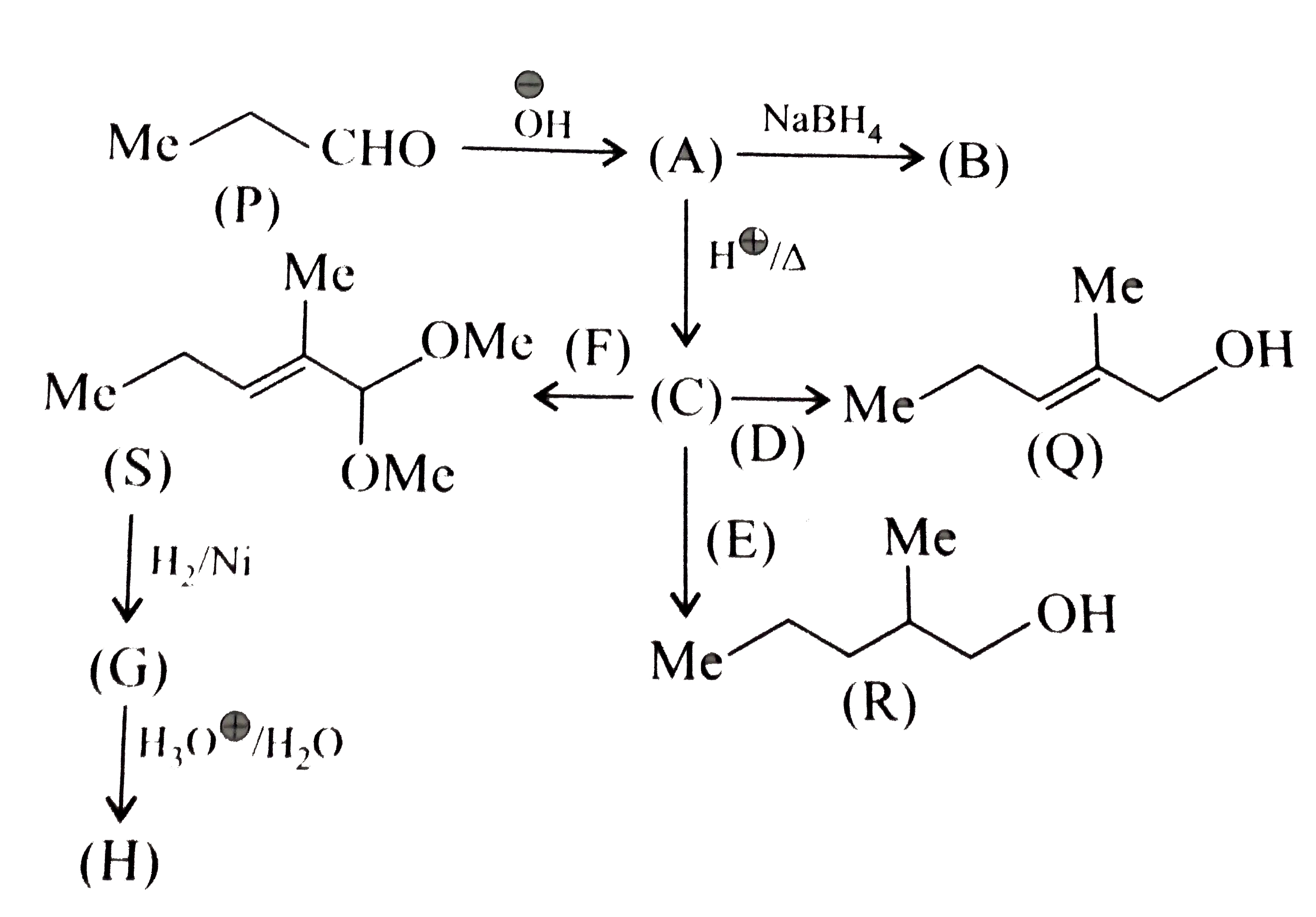
Compound (B) is:
View Solution
Compound (C ) is:
View Solution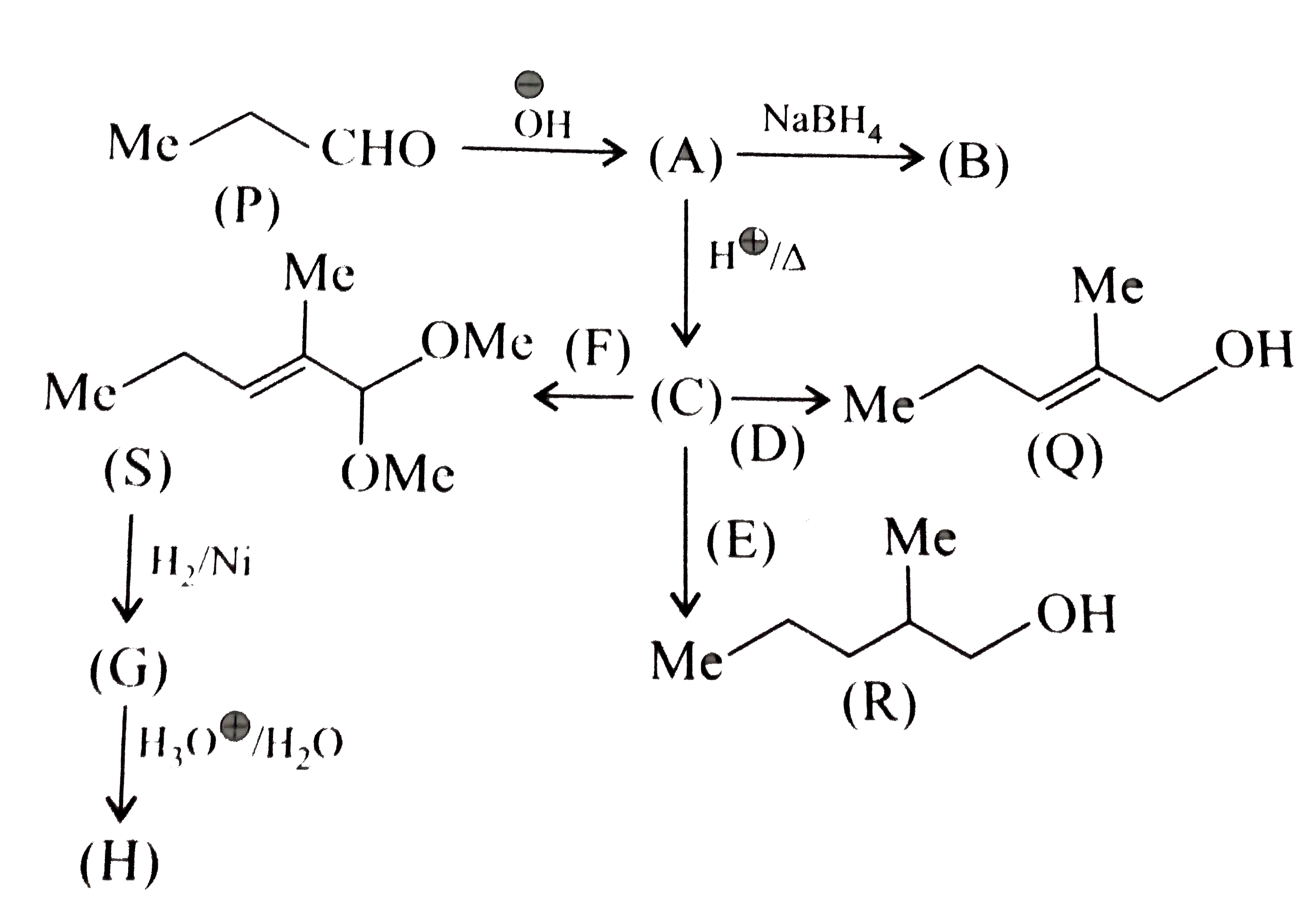
Reagent (D) is:
View Solution
Reagent (E ) is:
View Solution
View Solution
Compound (G) is:
View Solution
Compound (H) is:
View Solution
Compound (B) is:
View Solution
Compound (C ) is:
View Solution
Reagent (D) is:
View Solution
Compound (A) is:
View Solution
Compound (B) is:
View Solution
Reagent (C ) is:
View Solution
Compound (D) is:
View Solution
Reagent (E ) is:
View Solution
Compound (A) is:
View Solution
Compound (B) is:
View Solution
Compound (C ) is:
View Solution
Compound (D) is:
View Solution
Compound (E ) is:
View Solution
Which of the following statement is/are wrong ?
View Solution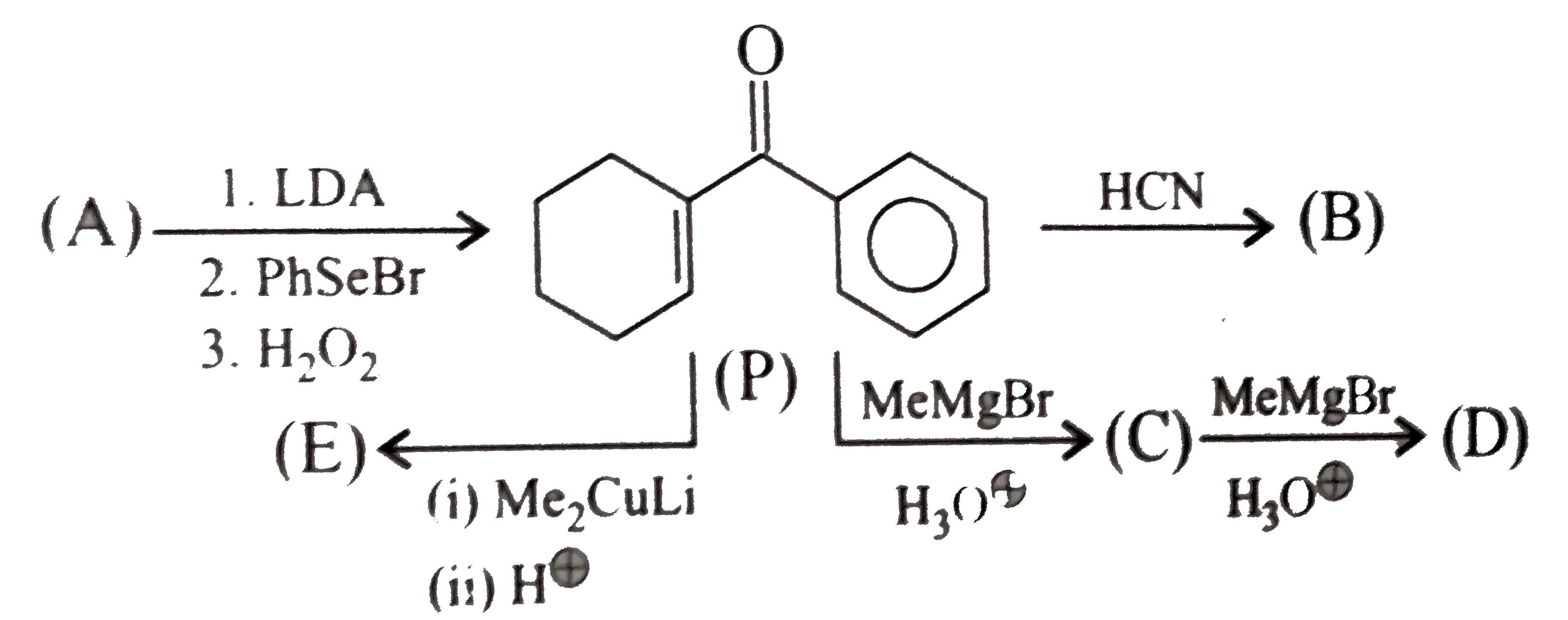
The amount of gas produced after the treatment of `21.8` gm of (D) with `MeMgBr` is:
View SolutionTwo aliphatic aldehydes (P) and (Q) react in the presence of aqueous `K_(2)CO_(3)` to give compound (R ) which upon treatment with HCN gives compound(S). On acidification and heating, (S) gives the product shown below:
Identify S
View SolutionTwo aliphatic aldehydes P and Q react in the presence of aqueous `K_2CO_(3)` to give compound R, which upon treatment with HCN provides compound S. on acidification and heating. S gives product shown below :

The compound R is
View SolutionTwo aliphatic aldehydes (P) and (Q) react in the presence of aqueous `K_(2)CO_(3)` to give compound (R ) which upon treatment with HCN gives compound(S). On acidification and heating, (S) gives the product shown below:

Compound (S) is:
View Solution
Exercises Linked Comprehension questions and complete solutions for chapter ALIPHATIC AND AROMATIC ALDEHYDES AND KETONES of CENGAGE CHEMISTRY (ENGLISH) of Class 12
All Exercises from CENGAGE CHEMISTRY Class 12 CHEMISTRY ALIPHATIC AND AROMATIC ALDEHYDES AND KETONES
- Archives Fill In Theblanks
- Archives Linked Comprehension
- Archives Multiple Correct
- Archives Objective
- Archives Subjective
- Archives True And False
- Exercises Assertion-Reasoning
- Exercises Concept Application
- Exercises Linked Comprehension
- Exercises Multiple Correct
- Exercises Single Correct
- Exercises Subjective
- Illustration
- Solved Examples